White glove customer service doesn’t belong only to enterprises with big budgets and large teams. SMBs can deliver it too.
Small but thoughtful touches like proactive support and personalized care make every buyer feel valued. The impact is just as powerful: stronger loyalty and higher sales.
In this post, you’ll learn five practical steps to build your white glove service strategy, along with inspiring examples.
Key takeaways for white glove customer service
White glove customer service means delivering attentive, tailored and seamless experiences beyond the basics.
While effective white glove service builds loyalty, renewals and referrals, it requires consistency and attention to detail to be successful.
Data and a robust customer relationship management (CRM) system are at the core of successful white glove tactics, making high-touch service scalable for SMBs.
Pipedrive centralizes client data, automates reminders and streamlines handoffs to make every customer feel valued with less effort – try it free for 14 days.
What is white glove customer service?
White glove customer service focuses on offering high-level assistance to buyers and creating premium experiences.
These caring acts demonstrate that you’re willing to go the extra mile to make customers feel special.
Your SMB may not have the budget for luxury loyalty programs or large customer support teams. However, you’ll win by being faster and more attentive than bigger competitors.
For example, an accountancy platform may notice a client’s tax filing deadline is approaching. The team builds trust and long-term customer retention by:
Reaching out with a to-do checklist
Offering to review documents
As customer expectations grow, exceptional service like this becomes the baseline.
In fact, Five9 research suggests that 77% of consumers only buy from brands that offer proactive support and 79% expect them to anticipate their needs.
According to the same study, almost 40% of consumers say one negative interaction is enough to make them never buy from that brand again. The stakes are high.
At its core, the white glove approach rests on three pillars:
Proactive communication. Anticipating customer needs instead of waiting for them to reach out. For example, sending a follow-up email before a subscription deadline or checking in after a purchase.
Personalization. Treating each customer as an individual (not just a ticket number) by remembering and referring to past purchases, preferences or unique goals.
Seamless handoffs. Customers who move between sales, onboarding and support don’t have to repeat themselves or start from scratch.
You need a single place to track buyer information and automate key touchpoints to implement these pillars successfully.
5 steps to create a white glove customer experience using Pipedrive
Using a customer relationship management (CRM) platform like Pipedrive allows you to log interactions with customers, automate reminders for proactive check-ins and keep customer history in one place.
A data-driven system makes it much easier to stay organized and deliver a premium service-level customer experience without adding extra staff.
Here’s how to offer white glove customer support as an SMB with limited resources.
1. Build a single source of truth for customer data
Build a single source of truth for customer data to eliminate silos and ensure consistent, personalized service across every touchpoint.
Instead of scattered emails and spreadsheets, your contacts, conversations, purchases and preferences all live in one system that your team can access.
The result is faster, more coordinated service that makes every customer feel prioritized.
For example, at a boutique marketing agency with five employees, a client might email her project leader about updating her campaign and later mention a redesign to the business owner.
By logging everything in your sales CRM, the account manager’s following conversation could feel like a thoughtful and tailored solution:
"We saw you were thinking about a redesign. Here’s how we could bundle that with your campaign updates."
Here’s how to create that single source of truth:
Centralize customer feedback and interactions (e.g., emails, calls and notes) in your CRM system
Make sure relevant team members have access to the same record, so nothing gets siloed
Keep records updated to ensure you’re working from accurate information
How to use Pipedrive as a single source of truth
Pipedrive’s contacts timeline lets you see customer interactions at a glance:
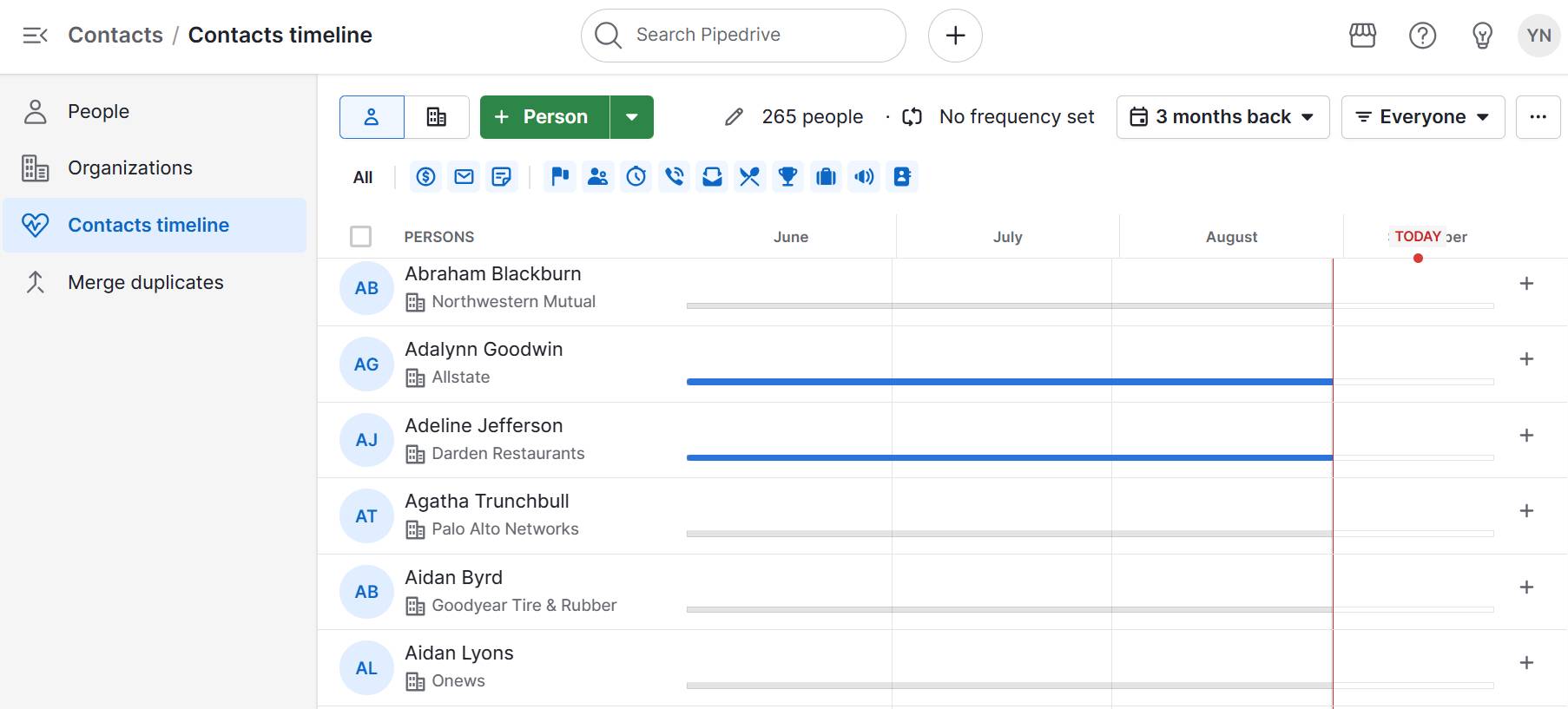
This view highlights gaps or patterns in your customer engagement, so you’ll see if you haven’t contacted someone or if follow-ups are pending.
Adding custom fields in your pipeline also allows you to track relevant details.
With this information, you can personalize outreach, send timely reminders and tailor your offers to create exceptional experiences.
Say a subscription is about to renew. You could reach out with a custom recommendation based on that customer’s usage, share tips for maximizing value or even flag features they haven’t explored yet to show attention, care and expertise.
2. Personalize touchpoints to build trust and brand loyalty
Personalizing customer interactions based on history, preferences and goals shows buyers you’re paying attention and anticipating needs.
While SMBs may not have massive marketing budgets, personalized experiences make each customer feel like a priority. According to McKinsey research, it’s enough to drive loyalty and sales.
Imagine you want to check in with clients who have recently completed a project with your graphic designers.
Instead of sending the same generic email to everyone, you reach out with personalized insights like:
Suggestions for next best steps
Tips to get the most from their new designs
Recommendations for complementary services
This customized, attentive outreach shows you’re paying attention to clients’ goals and care about their success.
How to use Pipedrive for personalization
Segment your clients to create groups based on project type, engagement level or upcoming deadlines using filters in Pipedrive.
By scheduling activity reminders to follow up at the right time (e.g., calling a week after launch), you’ll show clients you’re paying in-depth attention to their journey.
When you’re ready to reach out, use Campaigns by Pipedrive to create personalized emails for each segment:
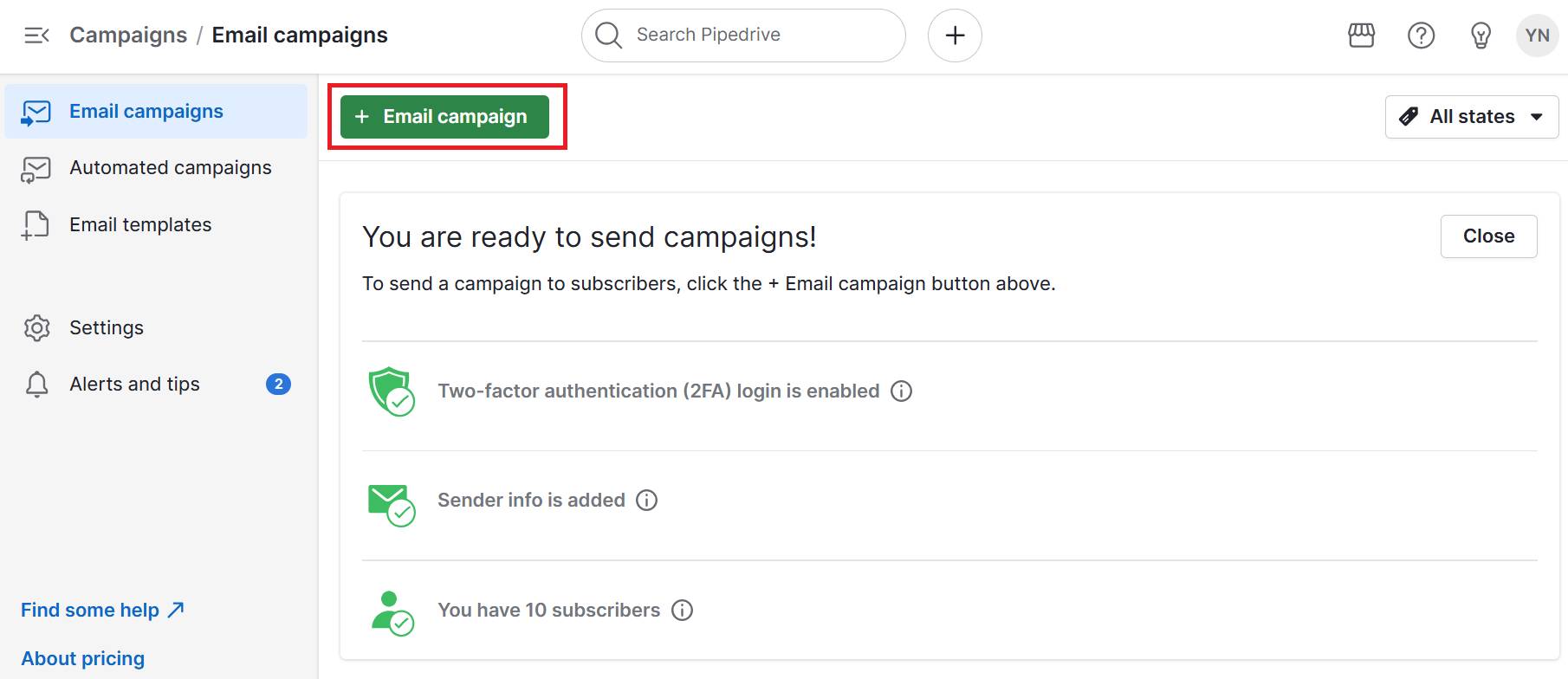
Tailoring content to each person’s needs and behavior ensures a premium experience and keeps communication relevant and helpful.
As Laury (an account manager at digital marketing platform DashThis) says about Pipedrive:
By combining segmentation, reminders and targeted campaigns, you’ll deliver thoughtful, timely interactions that always feel personal.
3. Automate proactive communication that customers expect
Proactive communication – reaching out before customers need to ask or follow up – shows attentiveness and prevents minor issues from becoming friction.
As a small business, staying one step ahead can be a competitive advantage. Automation helps you manage your customer service, ensuring no client slips through the cracks while freeing your team to focus on high-value interactions.
Pre-emptive messages like reminders, check-ins or helpful tips create a seamless white glove experience that customers notice.
Say a client uses your accounting software to manage payroll and send invoices. Instead of waiting for them to ask about upcoming deadlines or missing reports, you send a:
Heads-up before payroll submission
Note when tax documents are due
Follow-up after a quarterly review
These types of accounting workflow automation help them feel supported and confident.
How to automate communication using Pipedrive
Set sales activity reminder emails for key dates (e.g., payroll runs, tax filing deadlines or invoice follow-ups) so you always reach out at the right time.
Here’s where these live in the Pipedrive platform:
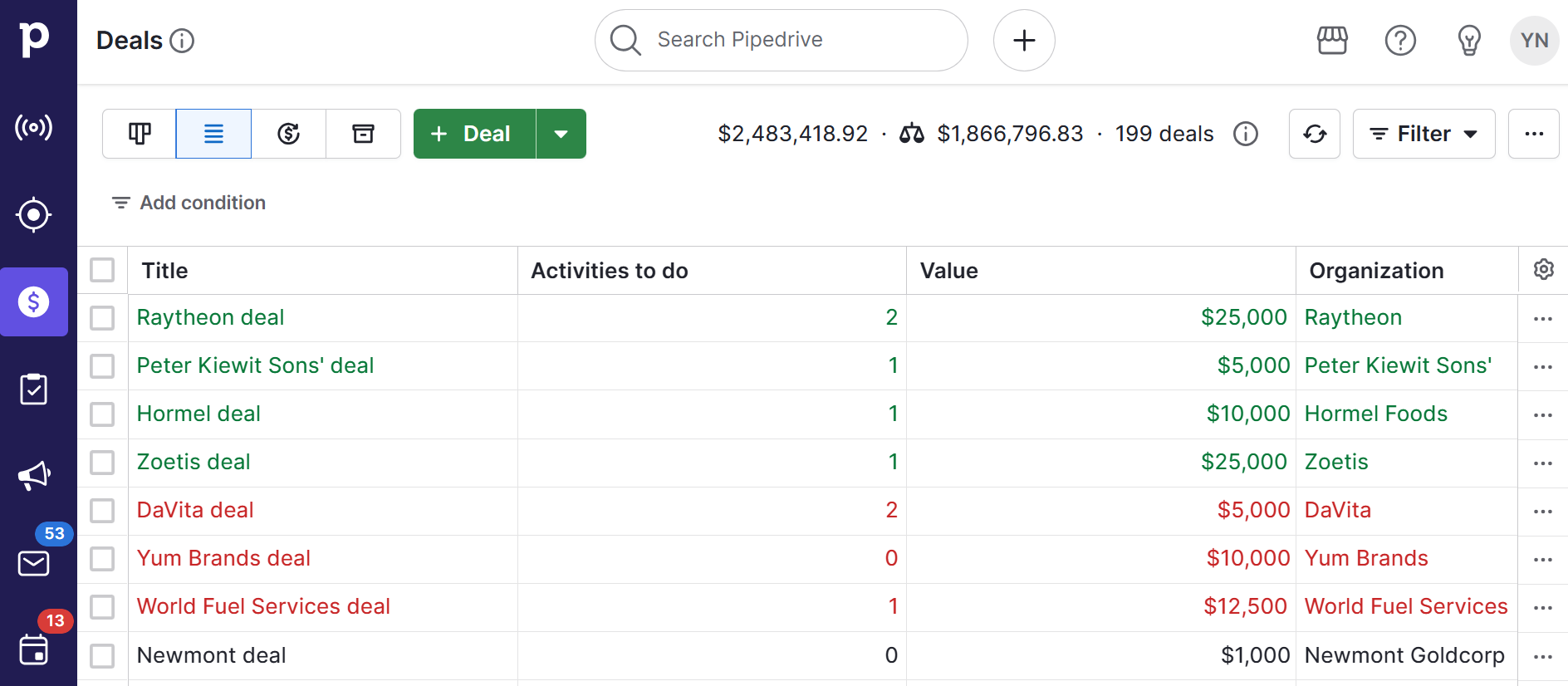
Workflow automations notify team members when they need to take action, ensuring smooth internal handoffs and timely client communication.
Here’s where you view all the sales task automations your team creates:

You can also create automated emails triggered by milestones, such as end-of-quarter summaries or alerts for overdue documents.
Pipedrive in action: Eye Hospital Denmark uses Pipedrive’s automated reminders to order the right lenses for treatments, resulting in a 0% failure rate for this crucial task that keeps patient satisfaction high.
If clients never have to chase you or worry about missing something important, they’ll remember and appreciate you for it.
Anticipating needs and guiding them through the steps with proactive care makes the overall experience feel “white glove”.
4. Ensure seamless handoffs by aligning teams
Seamlessly moving customers between colleagues or departments (like sales to onboarding) makes them feel supported and cared for.
When buyers don’t have to repeat themselves or re-explain their needs, it’s a hallmark of professionalism that people remember.
In a smaller business, the same client might talk to:
The founder during sales
An account manager throughout onboarding
A support rep for day-to-day questions
Clean transitions show your team is organized, aligned and truly listening.
Imagine you run a growing HR software company. A prospect signs up with your sales manager, sharing that their biggest priority is simplifying onboarding for new hires.
If you capture that information in your CRM, the success leader now opens with:
“We know new hire onboarding is a big focus for you. Let’s walk through how to make that easier with our platform”.
How to use Pipedrive to align your teams
Here’s how to ensure seamless handoffs using Pipedrive:
Use shared pipelines so marketing and support teams can see where the customer is in their journey
Log notes and goals during sales conversations so customer success can pick up without missing a beat
Assign activities to the right team member as soon as a sales deal closes, so the buyer knows you care post-sale
Set workflow automations to notify the next owner when it’s time to take over, making the next steps effortless
For example, here’s where you’d add customer service notes in Pipedrive:
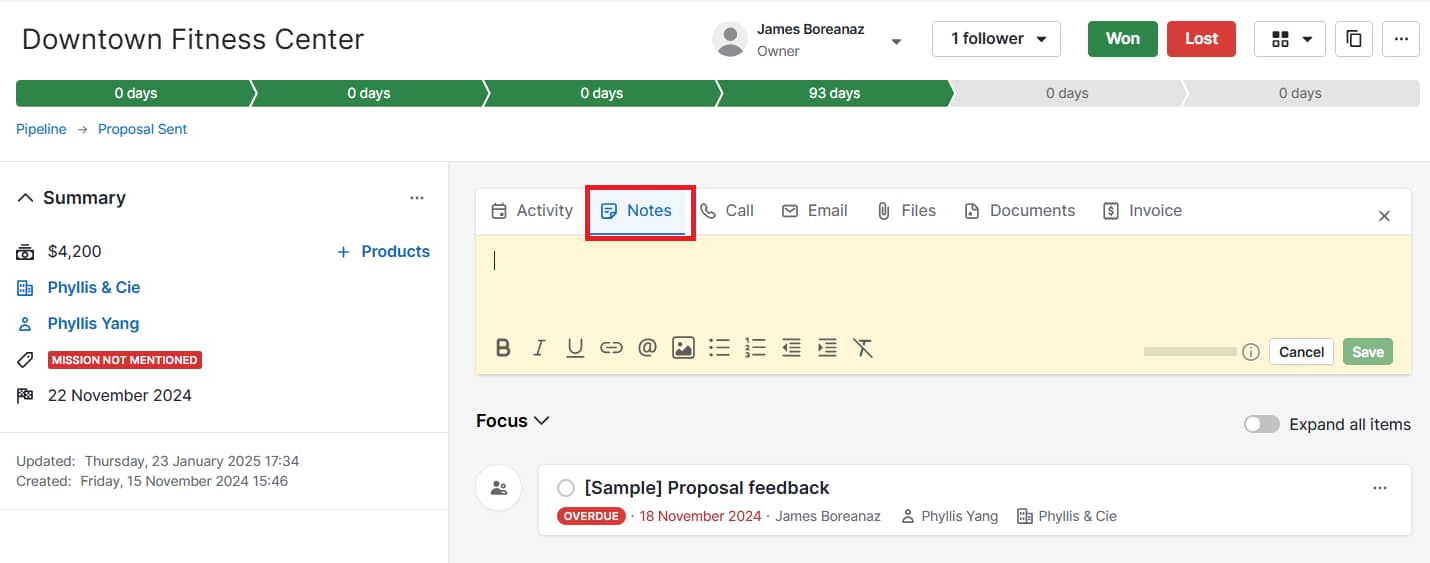
By aligning your team internally, you make the customer journey smooth and cohesive.
Clients feel like they’re working with one attentive partner and you create consistency that transforms handoffs into white-glove service quality.
Download Your Sales and Marketing Strategy Guide
5. Prove the value of your white glove customer service approach by tracking metrics
By tracking tangible outcomes like renewals, upsells and referrals, you can prove that your white glove customer service strategy drives real return on investment (ROI).
Say your small team invests time in delivering high-touch customer care. Demonstrating its payoff keeps them motivated and justifies the approach as you grow.
Clear, real-time metrics also help you identify what’s working and where to improve:
Renewal rate. How well your service builds long-term customer loyalty.
Upsell and cross-sell revenue. Whether proactive, personalized support leads to deeper client relationships.
Referral count. If customers are satisfied enough to recommend you to others.
Time-to-resolution. How efficiently your team solves customer needs (and how smooth transitions are).
Customer lifetime value (CLV). The overall ROI of your white glove approach.
Note: While Net Promoter Score (NPS) is often a popular suggestion, only 40.7% of contact centers rate it as “very important” anymore – likely because it’s too broad to capture real-time service performance insights.
For example, an IT services company has invested more time in proactive check-ins and personalized training programs.
At first, it feels like extra effort, but then the numbers show that renewals are up, referrals have doubled and clients are buying add-on services more often.
This data motivates the team to go above and beyond to keep creating these premium experiences.
How to track white glove service effectiveness using Pipedrive
Use Pipedrive’s dashboards and reports to track key service metrics over time:
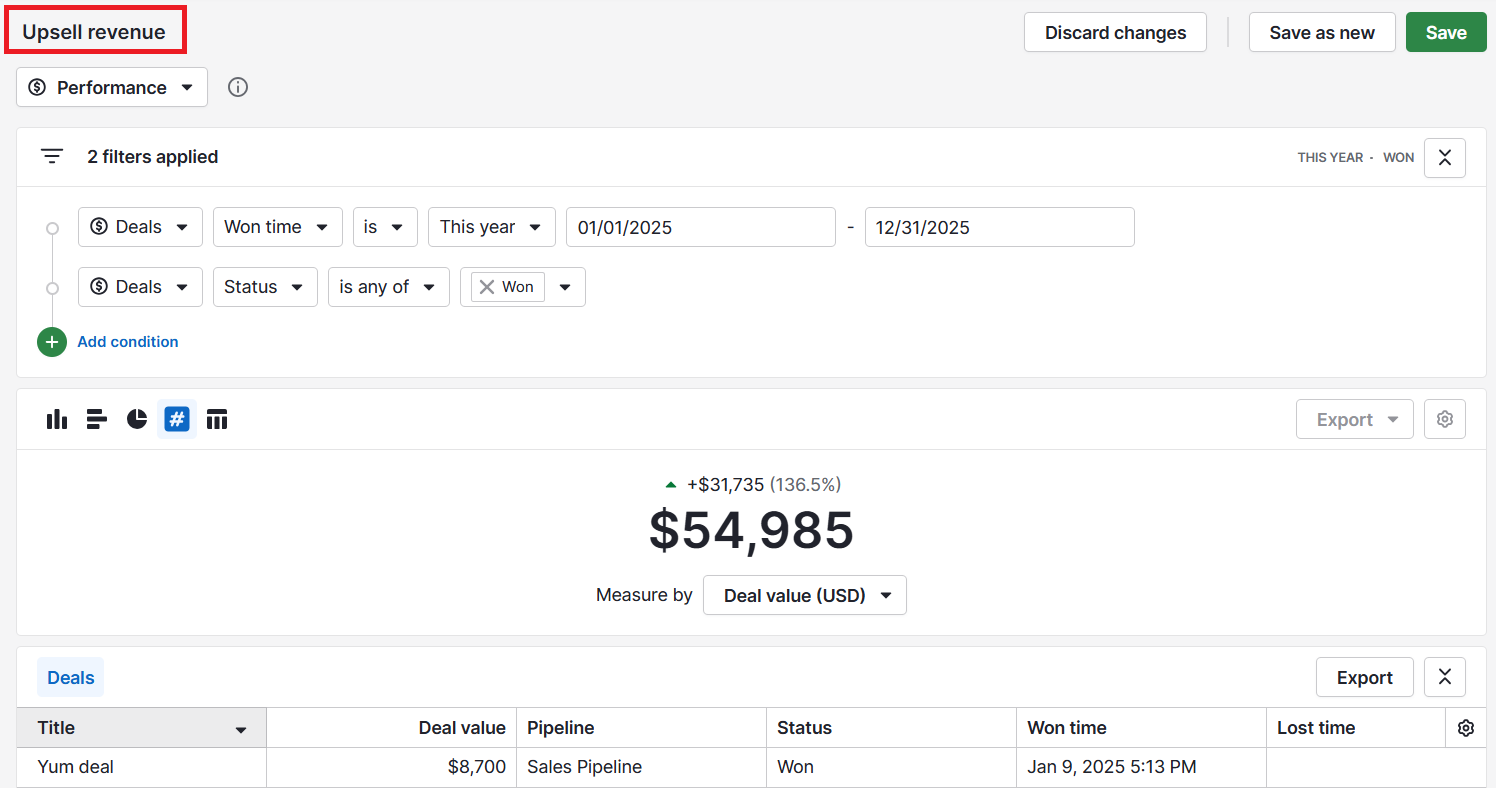
By reviewing insights about upsell revenue or average deal value, your team can see the direct link between high-end service and measurable results.
Create sales reports manually or using natural language prompts. Simply type what you need or choose a pre-written version within Pipedrive’s AI report generator feature:
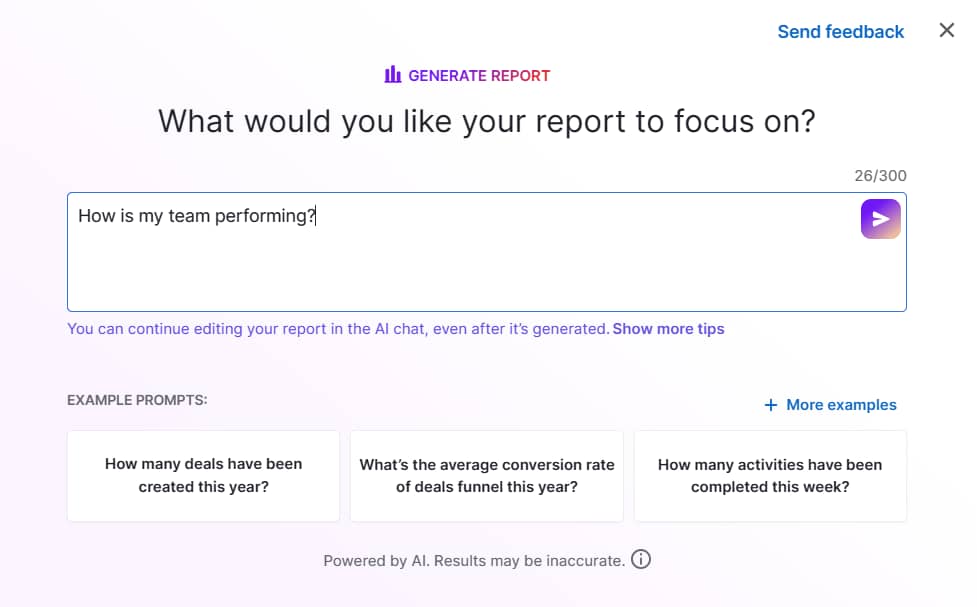
By measuring its impact, white glove customer service becomes a proven growth driver.
Use the insights to keep your team committed and show customers you’re serious about delivering this level of care at every step.
6 B2B examples of white glove customer service to inspire yours
In business-to-business (B2B), white glove service doesn’t always mean luxury perks or add-ons.
It involves removing friction, anticipating needs and showing customers you understand their business goals as well as they do.
Consider two design agencies. One of them hands a new client a login and says, “Let us know if you need help”. The other sets up a kickoff call, sends a tailored onboarding guide and checks in weekly to track progress.
The work might be the same, but the level of service feels completely different.
Here are six white glove service examples from B2B companies doing it right:
B2B company | How it offers white glove customer service |
Shopify | When new merchants sign up for its e-commerce platform, Shopify provides a step-by-step onboarding flow, suggests apps based on the business type and highlights common setup pitfalls. Takeaway for SMBs: Look at where your customers get stuck in onboarding and offer guidance to help them succeed faster. |
Square | Square walks customers through full payment setup, from connecting their bank account to configuring point-of-sale hardware and integrations. Takeaway for SMBs: Proactively tackle any trickier parts of your process so customers don’t have to figure it out alone. |
Monzo | Monzo lets customers preview upcoming access upgrades and prototype features in “Monzo Labs” to give feedback and shape them. Takeaway for SMBs: Involve customers in the future of your business so they’re more likely to become advocates. |
Xero | Xero pairs new clients with account managers who understand their business type and goals. Managers provide tailored advice on workflow optimization, reports and best practices. Takeaway for SMBs: Personalize your ongoing support so customers feel you care about their situations and targets. |
Canva | Canva provides live onboarding sessions, team-specific tutorials and pre-built custom industry templates to get everyone productive quickly. Takeaway for SMBs: Make sure every end-user gets the tools and knowledge they need to succeed. |
Zapier | Zapier’s support reps help customers design automation workflows that solve specific business problems. Takeaway for SMBs: Show customers how to get the most value from what you sell, even if it means going beyond baseline service. |
These examples prove that delivering white glove service doesn’t require a huge team or an enterprise-sized budget.
It comes down to thinking about what customers need at every journey stage and how you can provide it before they have to ask.
Final thoughts
For SMBs, white glove customer service is a powerful way to stand out against larger competitors. Anticipating needs, personalizing touchpoints and keeping handoffs smooth help build stronger relationships that translate into revenue.
With the right CRM, smaller teams can deliver customer-centric experiences consistently, without adding extra strain.
Try Pipedrive fee for 14 days to centralize client data, automate workflows and ensure that every buyer feels valued at each journey stage.









